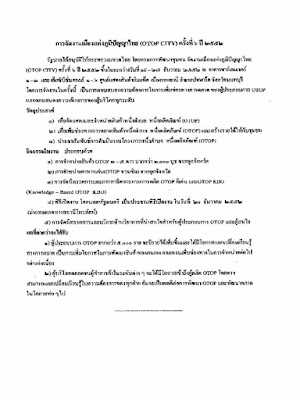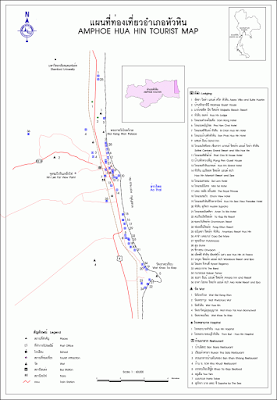SO WHY WORLD STOP ON COMPROMISE..FOR BETTER PROTECTION BAD ENVIRONMENT...YES OR NO????
THE POVERTY NEED SUSTAINABLE LIVING...
WE NEED NOT YOUR DONATE ONLY FOR RECOVER...
WE CAN LIVE BY OUR SELVES..IF WE GET MORE CHANCE IN EDUCATION,,,TECHNOLOGY..AND NICE GOOD GOVERNANCE...IN OUR COUNTRIES ALSO..
WE ARE NOT BEGGING!!!!!CHANCE BETTER!!!!
AND NOW WE HAVE DONE IN PROGRESS..
What Are Emissions?
Emissions are gases and particles released into the air as byproducts of a natural or man-made process. One of these processes is the burning of fuels to create electricity and other forms of energy. The emissions from burning fossil fuels contribute significantly to global warming and poor air quality.
Types of Emissions
A small set of emissions are responsible for the majority of human impacts on climate change and health. These gases and particulates come from a variety of sources and can be categorized as greenhouse gas emissions (that affect climate change) and air quality emissions. Clean energy typically produces no emissions, which is one of its most significant benefits.
Worldwide emission levels from human activity have increased significantly over the past 200 years as industrial activity, electricity infrastructure, and transporation have developed. As greater understanding of the impacts of these emissions has increased, regulation and new development practices have been implemented to reduce the rate of emissions in many countries. However, high levels of these emissions are still being produced each year.
Greenhouse Gas Emissions (Climate Change)
| Greenhouse Gas Emissions: Sources of All Emissions | |
|
|
|
 | Greenhouse gas emissions come from four main sources: the burning of fossil fuels to make electricity; industrial, commercial and residential burning of fossil fuels for heat and the use of other emission-producing processes; the burning of fossil fuels to power transportation; and the emissions produced through agriculture and miscellaneous activities. |
The primary emissions and their sources are as follows:
| 1. Carbon Dioxide | Sources |
|
|
|
| Carbon dioxide is one of the most common gases in the atmosphere and is regulated through the natural carbon cycle, where carbon dioxide is emitted into the air and reabsorbed by vegetation and water. This cycle is upset by the emission of additional carbon dioxide from human activity. Because natural cycles cannot absorb these additional emissions, a large portion of carbon dioxide remains in the atmosphere and increases climate change. The primary human source of carbon dioxide is the burning of fossil fuels for electricity, heat, and transportation. |  |
|
|
| 2. Methane | Sources |
|
|
|
| Methane is another naturally occurring gas. The primary natural source of methane is the decay of plants. Like carbon dioxide, the amount of methane in the atmosphere has increased significantly due to human activity and exacerbates climate change. Human activities that produce methane include fossil fuel production, decay in landfills, and the digestive processes of farm animals. |  |
|
|
|
| 3. Nitrous Oxide | Sources |
|
|
|
| The natural sources and cycles of nitrous oxides are not as well understood as those of carbon dioxide and methane, but its primary natural source appears to be bacterial breakdown of chemicals in soil. Human activities that increase nitrous oxide levels in the atmosphere, and as a result the risk of climate change, includefossil fuel burning, use of nitrogen-based fertilizers in farming, and emissions from industrial processes. |  |
|
|
|
| 4. Halocarbons and Sulfur Hexafluoride | Sources |
|
|
|
| Halocarbons are entirely man-made chemicals, meaning that they are not found on their own in nature. Their most common use is in refrigeration and air conditioning technologies but they are also used heavily in the electric system infrastructure. When released into the atmosphere as gases, they can significantly disrupt global climate patterns. |  |
5. Emissions with Indirect Impact
Other gases like carbon monoxide, nitrogen oxides, and volatile organic compounds (VOCs) impact climate change indirectly and have more direct effects on health when they are released into the lower atmosphere.
Emissions of greenhouse gases from human activity in the United States in 2001 totaled 6,936 gigatons (billion tons). In the same year, the natural cycles that regulate these gases were able to absorb 838 gigatons. This left 6,098 extra gigatons to remain in the air. This unsustainable amount of emissions represented a slight increase over previous years, and emissions are estimated to have increased even more in recent years. The U.S. produces more greenhouse gas emissions per person than any other country.
| U.S. Greenhouse Gas Emissions (gigatons carbon dioxide equivalent) | |
|
|
|
 | U.S. emissions in 2001 for each of the greenhouse gases are tabulated in this chart. Carbon dioxide is the highest emitted greenhouse gas from human activities. The amounts in this chart are measured in gigatons of emissions per year. Their relative environmental impact is accounted for in these numbers through a measurement known as "Carbon dioxide equivalent".
|
Greenhouse gas emission levels and sources in Massachusetts are comparable to those nationwide. Visit the Environment in Massachusetts section to learn about emission levels in the state.
Air Quality Emissions
In the U.S. , emissions that impact air quality come from a variety of sources. As you can see below, the emissions coming from electricity production, play a smaller role than they do in the emission of greenhouse gases. However, their role is still important.
| Air Quality Emissions: Sources of All Emissions | |
|
|
|
 | For each gas, the sources responsible for emissions vary greatly as different activities emit different levels of each gas. Electricity production plays the most significant role in nitrogen oxide and sulfur dioxide emissions. Transportation plays the most significant role for a number of emissions. |
The primary air quality emissions and their sources are as follows:
1. Ozone
Ozone is a unique emission because it is not directly produced by human sources. Instead, it is created as a result of chemical reactions between human-produced emissions and other gases in the atmosphere. Ozone is also unique because it is considered beneficial in some places and detrimental in others. When ozone is in the earth's upper atmosphere it is considered good because it protects the earth from the sun's radiation. But when ozone is created in the lower atmosphere, it creates smog which can cause respiratory problems and damage to plant and animal life. In the lower atmosphere, ozone is typically created when volatile organic compounds (VOCs) or nitrogen oxides react with other atmospheric gases.
| 2. Carbon Monoxide | Sources |
|
|
|
| This gas is created when the carbon in fossil fuels is not entirely burned during combustion. The majority of carbon monoxide emissions come from the use of fossil fuels in transportation. Lesser quantities come from electricity production and natural events like forest fires. When released into the air, carbon monoxide can exacerbate heart disease and damage the human nervous system. |  |
|
|
|
| 3. Nitrogen Oxides | Sources |
|
|
|
| Nitrogen oxides come almost exclusively from the burning of fossil fuels for transporation, electricity, and building and industrial use. Their impacts on air quality include creation of acid rain, ozone in the lower atmosphere, and direct respiratory problems. |  |
|
|
|
| 4. Sulfur Dioxide | Sources |
|
|
|
| Sulfur dioxide is created by burning fossil fuels with trace amounts of sulfur, like coal and oil. Smaller amounts can be created during industrial metal processing. The major source of sulfur dioxide is the use of fossil fuels in electricity production. Lesser sources include other energy production and transportation. Sulfur dioxide contributes to respiratory problems and the creation of acid rain. |  |
|
|
|
| 5. Particulates | Sources |
|
|
|
| Particulates includes dust, dirt, soot, smoke and other miniscule solids released into the air. Particulates can be composed of many different chemicals. Their human sources vary but come largely from construction activities like road building. Particulates can also form when emissions from fossil fuels react with sunlight and water vapor to create solid particles in the air. Particulates can affect heart and respiratory health. |  |
|
|
|
| 6. Volatile Organic Compounds | Sources |
|
|
|
| VOCs are found in a wide variety of consumer products from paints, solvents, and adhesives to carpeting, deodorants, and cleaning fluids. When released into the air, they react with other chemicals to create ozone in the lower atmosphere. They can also have direct air quality impacts inside buildings when off-gased by indoor paints, carpeting, and adhesives. |  |
7. Other Emissions Other gases can also impact air quality. The production of these gases is heavily regulated and the gases are currently emitted in much smaller quantities than the emissions listed above.
Current Emission Levels and SourcesLevels of emissions that affect air quality vary greatly by country and region. In the United States, the rate of emissions has actually decreased per year, both overall and per person. In some developing countries, as industry, electricity and transportation have developed, air quality has become a greater problem than before. In all nations, significant amounts of emissions are still being released.
| U.S. Air Quality Emissions (in million tons) | |
|
|
|
 | In 2003, 147.7 million tons of emissions impacting air quality were released in the U.S. These amounts are measured in million tons of emissions per year. Air quality emission levels and sources in Massachusetts are comparable in proportion to those nationwide. Visit the Environment in Massachusetts section to learn about emission levels in the state. |
How Clean Energy Can Help
Combating climate change and improving air quality requires a significant reduction in emissions. One of the defining features of clean energy technologies is that they either produce no emissions or produce far fewer emissions than fossil fuels.
Technologies that use solar energy, wind, hydropower, wave, or tidal energy do not have to burn any fuel to create power, and therefore produce zero emissions. Advanced clean energy technologies like advanced biomass gasification and fuel cells do burn fuel and produce some emissions, but because they are efficient they produce fewer than fossil-fuel-burning technologies.
<> | Emissions and Climate Change >
http://www.masstech.org/cleanenergy/important/envemissions.htmU.N. chief: Climate deal could 'change course of our history'

- NEW: U.N. chief: "We have a chance, a real chance, here and now"
- Clinton urges poor nations to help as Copenhagen climate summit heads into home stretch
- Growth in emissions over next two decades will come from developing world, Clinton writes
- President Obama is expected to arrive in Copenhagen to attend summit Friday
Copenhagen, Denmark (CNN) -- U.N. Secretary-General Ban Ki-moon told nations that they had the chance to "change the course of our history" if they worked together to limit carbon emissions that are blamed for increasing global temperatures.
"We have a chance -- a real chance, here and now -- to change the course of our history," he said, noting that countries had to work quickly, because nature doesn't negotiate.
He urged both industrialized and developing countries to do more during this week's Copenhagen summit toward reaching an agreement on limiting the emissions, saying they "can and they must do more."
"This is a time to stop pointing fingers," Ban added. "This is a time to start looking in the mirror and offering what they can do more of."
U.S. Secretary of State Hillary Clinton wrote Tuesday that the United States is ready to do their part to reduce greenhouse-gas emissions but that other countries, especially poorer ones, must play their parts as well.
Clinton's assertion came as a major international summit headed into the home stretch.
"Nearly all of the growth in emissions in the next 20 years will come from the developing world," Clinton wrote in an opinion piece for the International Herald Tribune. "Without their participation and commitment, a solution is impossible."
The divide between rich and poor countries is one of the key fissures at the U.N. conference on climate change in Denmark.
Developing countries object to restrictions that they fear would keep them from following the same path to prosperity taken by the United States and other industrialized nations.
 Video: Bolivia's melting glacier
Video: Bolivia's melting glacier  Video: Daryl Hannah: Live by example
Video: Daryl Hannah: Live by example  Video: Climate debate final thoughts
Video: Climate debate final thoughts The man running the conference warned Tuesday that "nowhere near enough progress" had been made toward an agreement.
"There is still an enormous amount of work and ground to be covered if this conference is to deliver what people around the world expect it to deliver," Yvo de Boer, executive secretary of the U.N. Framework Convention on Climate Change, said at a news conference.
Clinton's intervention into the debate comes the day before world leaders sit down in an attempt to hash out a final agreement. The "high-level segment" of the conference begins Wednesday.
President Obama is among leaders expected to attend the end of the summit. He's due to be in Copenhagen on Friday.
The United States announced an initiative Monday to support clean energy technologies in developing nations, funded by $350 million from industrialized countries.
U.S. Energy Secretary Steven Chu committed $85 million of the total funding over five years and also announced an international meeting next year in Washington billed as the "first-ever Clean Energy Ministerial."
According to a news release from the Energy Department, the Renewables and Efficiency Deployment Initiative, or Climate REDI, "will accelerate deployment of renewable energy and energy efficiency technologies in developing countries -- reducing greenhouse gas emissions, fighting energy poverty and improving public health for the most vulnerable, particularly women and children."
The plan combines different programs to tackle a series of environmental challenges, including climate change. One focuses on getting solar home systems and LED lanterns to those without access to electricity, to help them avoid "expensive and polluting kerosene."
Another "will provide policy support and technical assistance to low-income countries developing national renewable energy strategies," according to the news release.
The plan is part of the Major Economies Forum on Energy and Climate, created by the Obama administration. It includes increasing the efforts of existing programs under the World Bank's Strategic Climate Fund.
Other nations contributing funds toward the global initiative include Italy, Australia, Britain, the Netherlands, Norway and Switzerland.










